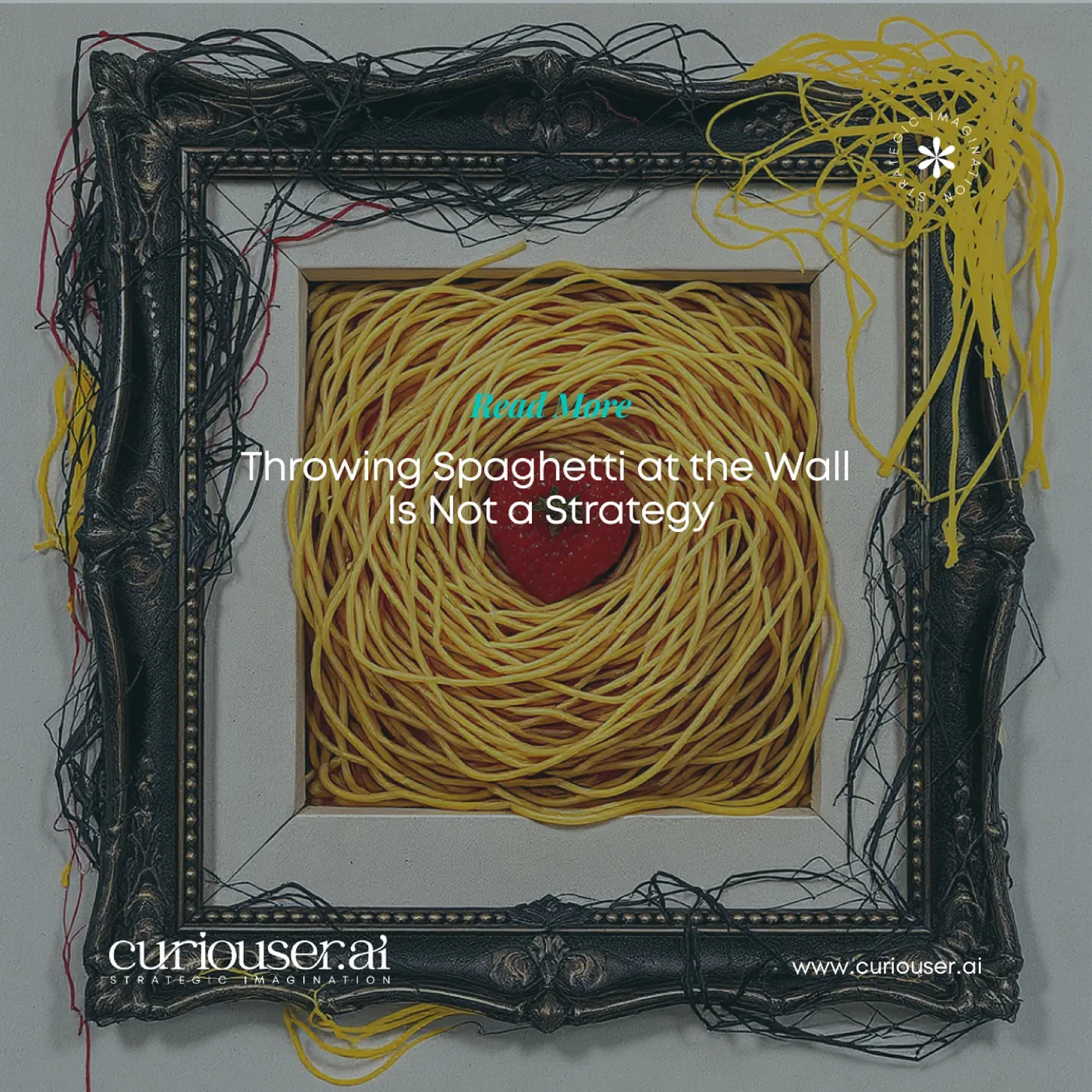

Silicon Valley's current playbook for Generative AI is simple: ship first, integrate everywhere, and pray something sticks. It's the accidental strategy of our time, feature-sprawl masquerading as product vision.
The problem isn't that AI is useless. It's that too many teams are bolting it onto everything, instead of solving one painful, verifiable problem end-to-end.
What "Spaghetti Strategy" Looks Like in the Wild
Browsers as bots. Google is now embedding Gemini directly into Chrome, touting the "biggest upgrade in Chrome's history," with page summaries, scam protection, and omnibox queries baked into the browser itself. TechRepublic+1
OS-level copilots. Microsoft is weaving Copilot experiences across Windows and Microsoft 365, right inside the operating system and productivity suite. Microsoft Learn
Workplace chat with AI everywhere. Slack has rolled out AI recaps, summaries, enterprise search, and more, features that now sit at the center of how teams navigate work. Slack+2Slack+2
Social platforms with omnipresent assistants. Meta AI is now threaded through WhatsApp, Instagram, Facebook, and even a standalone app. The assistant isn't an app you open; it's the water you swim in. Meta AI+2WhatsApp Help Center+2
When AI is everywhere, two risks spike: trust and signal-to-noise.
Consider Google's AI Overviews fiasco, answers so confidently wrong they suggested glue on pizza. The company acknowledged misinterpretations and rushed fixes, but the lesson remains: when you ship AI into defaults, errors scale with distribution. The Verge+1
Why It's Happening (Follow the Incentives)
Quarterly optics. Announcing AI "everywhere" signals momentum, even if measurable value is "nowhere."
Platform defense. Incumbents bundle AI to defend moats: if the browser, OS, or social graph is the assistant, competitors become bolt-ons.
Narrative capture. The market rewards the appearance of inevitability. If every product demo features AI, investors and boards assume progress.
Reality Check: The ROI Gap
A recent MIT-linked report — The GenAI Divide: State of AI in Business 2025 — finds 95% of enterprise GenAI pilots show no measurable P&L impact, with value concentrated in a small minority solving narrow, well-defined problems. Multiple outlets summarized the same finding. The Times of India+4Campus Technology+4Fortune+4
You can debate methodology; you can't ignore the pattern. Value comes from specificity, not ubiquity. AI that's "everywhere" often becomes useful nowhere in particular.
The Trojan-Horse Cost
Bundling AI into default experiences feels convenient, but it quietly shifts control from users to platforms:
- Consent drift. "Optional" assistants land as opt-out defaults inside core tools. blog.google+1
- Interface capture. Assistants mediate the task you used to do directly — searching a page, formatting a doc, asking a colleague — reducing transparency in how answers are produced. TechRepublic
- Error externalities. When hallucinations are injected at the OS or browser layer, bad answers propagate faster than they can be corrected. blog.google
What Actually Works
The small cohort getting results does almost the opposite of "spaghetti":
- Pick one job to be best at. Narrow, operational use cases with a closed-loop metric (e.g., first-contact resolution, time-to-quote, claims triage). Tom's Hardware
- Integrate where the work lives. Embed in the workflow you already own (CRM case view, help desk, ERP) — not everywhere, just exactly where the decision happens. Campus Technology
- Measure P&L, not vibes. Define lift before launch; deprecate features that don't clear the bar. Campus Technology
- Earn trust with opt-in. Defaults should be human. AI should be invited, explainable, and interruptible. Slack
A Better Frame: From Automation to Augmentation
The next chapter isn't about AI that replaces people; it's about AI that helps people think, decide, and deliver with fewer blind spots. That requires fewer features — and more design:
- Clarity over novelty. One purpose, one metric, one interface that reduces cognitive load.
- Human-first control. Transparent sources, undo, and an obvious "show your work."
- Ethical defaults. Privacy-preserving by design; data stays where the work (and risk) lives.
Throwing spaghetti at the wall is a cooking technique, not a strategy. The leaders in this era will do less — and do it extremely well.
The companies that will win the AI era won't be those who integrate AI into every surface—they'll be the ones who solve one meaningful problem exceptionally well. Strategy isn't about doing everything. It's about choosing what matters most.
Written by Stephen B. Klein
Notes & Sources
- Google: "Chrome's biggest upgrade with Gemini" and AI features in the browser, Sep 18 — 22, 2025. TechRepublic
- Microsoft: Copilot experiences across Windows and Microsoft 365; admin guidance (June 10, 2025). Microsoft Learn
- Slack AI: recaps, summaries, enterprise search (2024 — 2025). Slack
- Meta AI across apps and standalone app (2025). Meta AI | WhatsApp Help Center
- Google AI Overviews errors and Google's response (May 2024). The Verge
- "95% of GenAI pilots show no measurable P&L impact" — summaries of The GenAI Divide: State of AI in Business 2025 (Aug — Sep 2025). The Times of India | Campus Technology | Fortune


